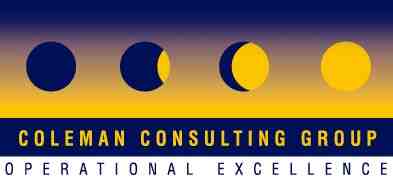Boutique Investment Banking

|
T.V.
METZ
& CO., LLC
Boutique Investment Banking |
 |

|
|
|||||||||||||||||
|
|
 has
been
acquired by
 |
The
Situation
Coleman Consulting Group, Inc. helps its clients
improve performance by optimizing personnel and capital
equipment.
Clients include large manufacturing and mining companies that require a
significant number of shift workers.
Coleman
has helped firms like Kaiser Aluminum, General Motors, Allied Signal
and EDS optimize the deployment of capital and human resources.
Coleman's 35 consultants rearrange work schedules and
reduce overlap, resulting in more efficient
operations.
Savings also result from avoiding the cost of purchasing new capital
equipment.
The company flourished, revenue exceeded $10
million and the firm was extremely profitable. To capitalize on this
success, Coleman brought in a venture capital firm that acquired half
of the company. The plan was to step on the gas, enter more markets and
take the company public.
A new president was hired who pushed
the company to aggressively enter additional niches in
six geographic markets. The firm did not have the
infrastructure
to support such aggressive expansion. After a year of futile efforts
and rising expenses, the company had achieved only minimal
success
entering additional markets.
Under the new regime, the
company's consultants now had the task of making sales in addition to
their ongoing consulting work. The sales effort became unfocused and
the company experienced its first loss.
The company needed to
change course. The venture capital backers had lost enthusiasm, the
president was terminated and the founder returned to run the company.
It became clear that the best option was to team up
with a
strategic acquirer, i.e., sell the company.
The Response
T.V.
Metz & Co., LLC was engaged to find a strategic buyer and close
a
transaction. Coleman's key asset was its intellectual property—its
knowledge base of best practices and optimization
methodologies and its people. We sought buyers who could
effectively utilize these key assets.
The first step was to
contact the usual suspects in the consulting space—the top 50
consulting firms and consulting divisions of the major accounting
firms. We also contacted the consulting divisions of companies such as
IBM and UPS, as well as large software firms looking to expand into
consulting (Baan, SAP, and Siemens).
We contacted a number of
specialty consulting firms. The categories became narrower as we dug
deeper. Coleman was not an obvious fit for any buyer. It did not fit
the typical consulting company strategy.
We
examined information technology consulting areas as well as
lean
manufacturing. We investigated fringe sectors of the software
space enterprise
management, time & attendance, scheduling, human resources and
labor tracking software. A number of software companies were adding
services to their software businesses.
The Solution
Coleman
had been gradually repositioning itself as a scheduling
company.
Scheduling is a critical task for a number of industries (airlines,
railroads, hospitals, call centers) and the area appeared promising.
We
contacted firms in the call center space, one of which was Blue Pumpkin
Software, Inc. of Mountain View, CA. Blue Pumpkin is a leader in work
force management software and its products provide forecasting and
management software for call centers.
Coleman's
consultants could install the workforce solutions that Blue Pumpkin
sold and provide value-added services to its high-end installations.
Blue Pumpkin could add a strategic service component to its business.
Coleman's "best practices” scheduling technology could improve software
performance and customer satisfaction. Coleman also had a client base
that gave Blue Pumpkin cross sale opportunities.
In Review
The
unique aspect of this transaction was that the fit was not obvious. The
companies had different products and services—one was a
software
company; the other was a consulting company.
In
arranging this transaction, we contacted 150 companies. We reached out
to the tangential and fringe buyers in adjacent markets who were not
the obvious fits. This approach required significant effort, however,
it produced results.
The sale price of $9 million was
greater than what the shareholders expected and they were pleased to
realize this value. This transaction is an example of disciplined
execution coupled with resourceful forays into tangential
markets.